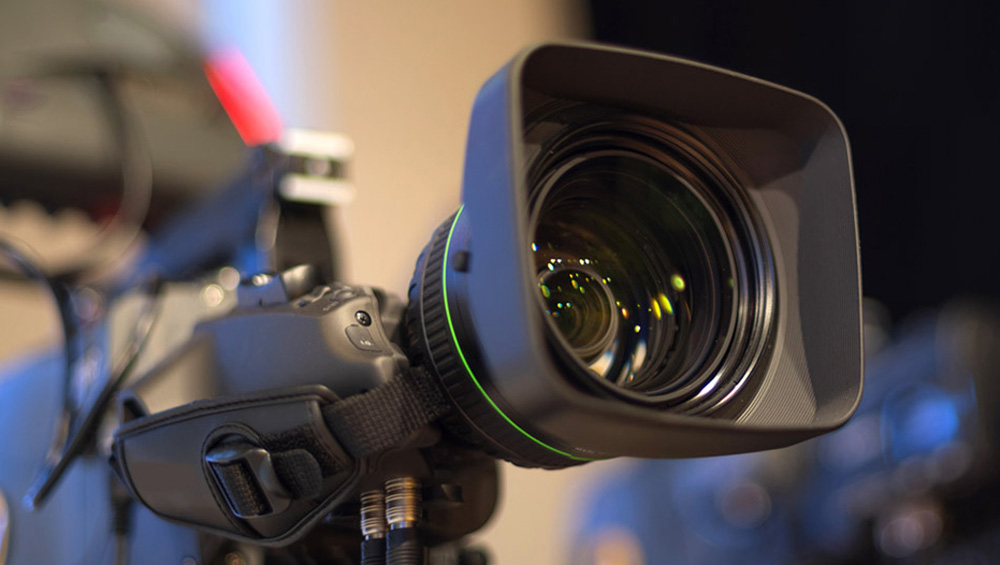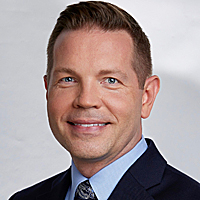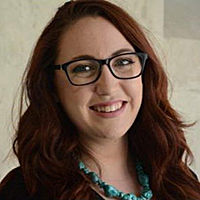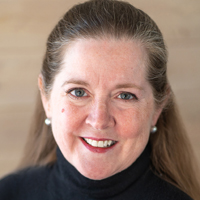
Embracing Collaboration, News Groups Push Past Conventions

LAS VEGAS – From bilingual newscasts to different ways of providing national investigative support for local stations, broadcasters are veering away from conventional newscasts and experimenting with their local news content.
These journalistic efforts require collaboration among multiple stations in a group as well as between national and location teams, industry experts said during the Fresh Approaches to the News Franchise panel at TVNewsCheck’s Programming Everywhere event on April 16 at the NAB Show.

Chad Cross
A CBS initiative is its On the Dot brand, which focuses on climate change, Chad Cross, VP, content development at CBS News and Stations, said.
“Everyone knows weather drives viewing of local news,” he said, adding On the Dot doesn’t look like a traditional news story or a science lesson. “It feels very much like you’re going on an adventure.”
The content is longform, typically around nine minutes, and is dropped into local newscasts on CBS’s stations.
CBS is also focused on data-driven journalism, such as an analysis of FBI data around murder solve rates in the country.
“What we found is if you are a white victim of murder, nationally, the rate of it getting solved is improving,” he said. It is “getting worse at solving” murders of people of color.
That data was shared with CBS stations so they could do their own original reporting and hold their leaders accountable, Cross said. “Every story’s different.”

Jamie Grey
Gray Television’s InvestigateTV focuses on “stories that are going to have an impact on anyone,” said Jamie Grey, managing editor of investigations for InvestigateTV, a half-hour weekend show in its second season.
Data is driving these efforts as well. “With Bridging the Great Health Divide,” the team looked at medical care accessibility on a county-by-county basis in its markets and shared that information with the stations.
“We send out national stories and give the stations the opportunity to run a national story that has impact for them,” Grey said. But at the same time, “we give them the tools” to create a local story in the same vein. The focus is on how to give context for what the information means to viewers, she said.
Typically, there is a longer-form version and a couple of shorter versions, and the stations can choose what they want to run, Grey said. “We can hold them for nine minutes on the ‘national story’ because it’s relatable.”
Scripps News’ In the Loop nightly program dives more deeply into news and showcases reporting from various Scripps stations.

Kate O’Brian
“The journalist is the heart of the E.W. Scripps Company,” said Kate O’Brian, president of Scripps News. When Scripps teams work with local groups, it is “building the sense this is one large journalism organization.”
Sharing and collaboration are critical, she said. And collaboration starts with good communication and spreads across the whole system including “rundowns, every script, programming, video raw and produced that’s available.” The result, she said, is an “unbelievable” amount of content. “Why wouldn’t you want to share everything?”
And while the mantra “if it bleeds, it leads” has long directed the prioritization of some broadcast news content, O’Brian said Scripps is pivoting away from “what has been a local news staple for many years into a narrative-driven serious journalism ethos.”
Instead, the focus is on storytelling, enterprise journalism and stories of the community and neighborhood.

Ozzie Martinez
Telemundo opted for a regional focus for its FAST channels in Spanish, said Ozzie Martinez, EVP of news, original programming and standards for Telemundo Station Group, NBCUniversal Local.
“FAST channels are a great way for us to experiment with different things,” he said.
The decision to go bilingual was an easy one as Telemundo’s stations “are in markets where the people are bilingual,” he said, noting speakers may shift from Spanish to English mid-sentence.
While it can be hard to shift languages when delivering news, it works well for other content, such as community events and sports, Martinez said.
“We started experimenting with that concept of how we can experiment with bilingualism about four years ago,” he said. Telemundo is experimenting with putting the same content on live programming for its stations and the FAST channels. “It’s a great experiment to continue to lean into,” he said.
But a regional, live show, such as it produces with Night Edition, isn’t easy. “Getting five different newsrooms to agree to one thing is really hard,” he said. “We collaborate. That’s the key to our success.”
The rundown is put together in New York City, the weather comes out of Philadelphia, sports comes from Washington.
“They all go in and put their piece of it into the pie, and it’s fronted live by 8 [p.m.] out of Boston,” he said.
Sometimes upping a station’s reporting game doesn’t come from the group or a network but instead a curator of potential sources. The nonprofit SciLine works to increase the amount and quality of science used in reporting news stories through helping journalists access vetted, nonpartisan and camera-ready scientists.

Rick Weiss
“There’s more misinformation and disinformation going on,” said Rick Weiss, director of SciLine. “Our mission is to make it as easy as possible for local journalists to connect with excellent science sources.”
Bringing science into stories makes them more credible and brings science to the public, he said. For example, if there’s a story about a proposal to ban gas-fueled leaf blowers, the journalist could talk to an audiologist about the volume or a scientist who specializes in ergonomics about how much work it takes to rake versus blowing leaves, Weiss said. “These kinds of things make the story so much more interesting.”
Read more from Programming Everywhere here.
































Comments (0)